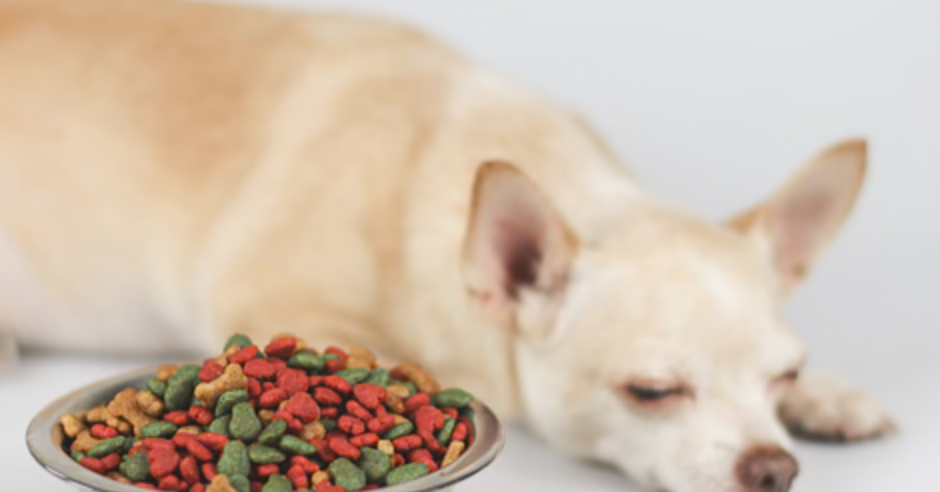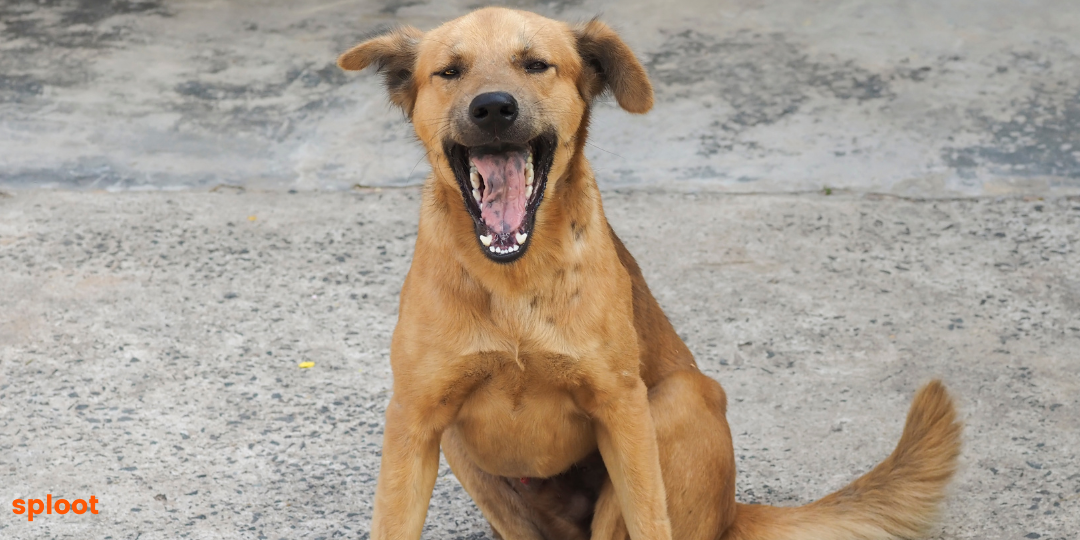Disclaimer: This article contains general information about dry dog food shelf life, which depends on brand type and formulation specifics. You should store dog food in a dry and cool area following the containers’ storage instructions. Feed your dog according to package guidelines, but modify their portions based on their size, age, health condition, and activity levels. Talk to a veterinarian for individual dietary recommendations to ensure proper nutrition for your dog.
Ever stared at your pup’s kibble pack and wondered how long does dry dog food last and whether what your pup is eating is safe or not? You’re not alone! While dry dog food is very convenient, there are a few things you should keep in mind· Just like your favorite snacks, kibble has an expiration date and needs proper storage to stay fresh and nutritious·
So, let’s dive into the do’s and don’ts of keeping your furry friend’s food safe and they always eat and stay healthy!
How Long Does Dry Dog Food Last?
Unopened Pack
When stored properly, commercial dry dog food typically lasts 12-18 months· Its airtight packaging protects it from moisture and air, extending its shelf life· However, preservative-free organic and nutrient rich healthy foods for dogs have a shorter lifespan due to the lack of synthetic preservatives· Checking the expiration date and ensuring the packaging remains intact are key factors in prolonging its usability·
Opened Pack
Once opened, fresh dog food should be consumed within 4-6 weeks· Exposure to air, light, and humidity can degrade nutrients and cause loss of flavor· Storing the food in an airtight container in a cool, dry place will help retain its freshness and prevent contamination·
Homemade Dry Dog Food
If you make dry dog food at home, it typically lasts 1-2 weeks, depending on storage conditions· Unlike commercial options, homemade food lacks preservatives, making it more susceptible to spoilage· Proper storage, such as refrigeration or freezing, can help extend its shelf life while maintaining its nutritional value·
What Ingredients Are Used in Dry Dog Food?
Most dry dog food contains a blend of grains, proteins, and essential nutrients to support overall health· These ingredients are carefully selected to provide balanced nutrition and meet the dietary needs of dogs at different life stages·
- Proteins: Sources such as chicken, fish, lamb, and eggs provide essential amino acids that support muscle growth and maintenance·
- Carbohydrates: Grains like rice, lentils, and sweet potatoes offer a source of energy, aiding in digestion and overall vitality·
- Vitamins & Minerals: Added nutrients help support immune function, coat health, and overall well-being·
- Vegan Options: Plant-based proteins like soybeans, peas, and lentils serve as excellent alternatives for dogs with meat allergies or dietary restrictions·
A well-balanced dry dog food should be high in protein, contain sufficient carbohydrates for energy, and be fortified with essential vitamins and minerals to promote overall well-being·
When and Why Does Dry Dog Food Go Bad?
Dry dog food can go bad due to various environmental and storage factors· Being aware of these risks can help pet owners take preventive measures to extend its shelf life:
- Exposure to air & light: Oxidation leads to loss of nutrients and makes the food stale.
- Moisture: Even small amounts of moisture can encourage mold growth, making the food unsafe for consumption.
- Contamination: Pests, such as insects or rodents, can introduce bacteria and spoil the food.
- Climate: High humidity and heat accelerate spoilage, particularly in tropical regions.
- Preservatives: While synthetic preservatives extend shelf life, natural or preservative-free foods may spoil faster.
How to Tell if Dry Dog Food Has Gone Bad?
It is crucial to check for signs of spoilage before feeding dry dog food to your pet. Spoiled food can pose health risks, leading to digestive problems or illness:
- Rancid or unusual odor: A strong, unpleasant smell indicates the food has turned bad.
- Clumping or excessive dryness: Changes in texture suggest moisture exposure or nutrient degradation.
- Visible mold or insect infestation: Any signs of mold growth or pests mean the food is unsafe.
- Loss of original color: Faded or discolored kibble might indicate oxidation and nutrient loss.
If you notice any of these signs, discard the food immediately to avoid potential health risks·
Common Signs Your Dog May Have Eaten Spoiled Food
Spoiled food can lead to digestive issues, infections, and severe discomfort for your dog. Common symptoms include:
- Diarrhea – Loose, frequent stools can indicate food poisoning or bacterial contamination.
- Vomiting – A clear sign that your dog's stomach is rejecting something harmful.
- Lethargy – If your usually energetic pup seems sluggish or uninterested in activities, spoiled food could be to blame.
- Loss of Appetite – Dogs instinctively avoid food that smells "off," so refusal to eat may be a warning sign.
- Excessive Thirst or Drooling – Some toxins can cause dehydration or irritation in the mouth and throat.
What to Do If Your Dog Eats Spoilt Dry Dog Food?
If you suspect your dog has eaten expired or rancid kibble, it’s important to act fast· Here’s what you should do:
- Monitor Closely – Keep an eye on your dog’s behavior and note any unusual symptoms· The mild digestive upset may pass, but severe symptoms require intervention.
- Contact Your Vet – If your dog shows persistent vomiting, diarrhea, extreme lethargy, or signs of pain, reach out to a veterinarian immediately· Food poisoning can escalate quickly and may require professional treatment.
- Keep Your Dog Hydrated – Provide fresh, clean water at all times to help flush out toxins and prevent dehydration, which can worsen symptoms.
- Avoid Home Remedies – While it’s tempting to try DIY solutions, some remedies may do more harm than good· Always consult a vet before giving your dog any medication, supplements, or special diets.
- Check for Contaminants – Inspect the food bag for mold, unusual smells, or signs of infestation· If you suspect bacterial contamination, dispose of the food safely to prevent further risk.
- Prevent Future Issues – Proper storage is key to keeping kibble fresh· Store dry dog food in an airtight container, away from heat and moisture, and always check expiration dates before feeding.
Storage Tips for Dry Dog Food
Tips for Commercial Dry Dog Food
- Use an airtight container to prevent air and moisture exposure, keeping the food fresh for longer.
- Store in a cool, dry place, away from sunlight and heat, to slow down nutrient degradation.
- Keep food in its original packaging inside the container to retain product details, expiration date, and freshness.
Tips for Homemade Dry Dog Food
- Refrigerate homemade dry dog food in small, airtight containers to prevent bacterial growth.
- Always buy the best dry dog food and use it within 1-2 weeks to ensure freshness and avoid spoilage.
- Avoid bulk storage unless freezing portions for extended use, as homemade food lacks preservatives.
Do’s and Don’ts
- Do keep food off the floor to prevent pests and contamination.
- Do clean storage containers regularly to avoid bacterial buildup.
- Don’t store food in hot or humid areas, as it accelerates spoilage.
Choosing the Best Dry Dog Food
Selecting the right dry dog food ensures your pet gets optimal nutrition· Consider the following factors:
- Look for high protein content and balanced nutrients to meet your dog's dietary needs.
- Choose food based on your dog’s age, size, and activity level for the best health benefits.
- Avoid fillers, artificial colors, and excessive preservatives, as these may cause digestive issues.
- Research brands and check reviews to ensure quality, transparency, and reliability.
Some Yummy Homemade Dry Dog Food Options
Homemade dry dog food gives pet owners control over ingredients and helps cater to dietary restrictions and allergies:
Chicken & Rice Bites
Ingredients: Chicken, brown rice, carrots, eggs.
Preparation: Cook and bake the mixture into small, kibble-sized pieces for easy consumption.
Pumpkin & Fish Treats
Ingredients: Pumpkin, fish fillets, oat flour.
Preparation: Mix, shape into small bits, and bake until crunchy.
You can always shop for your dog's meals, but homemade options are fresher· In addition, they are a healthier alternative free from artificial preservatives.
Join the Sploot Community
Understanding dry dog food shelf life and storage is essential for keeping your pet’s meals fresh and nutritious· Follow our storage tips, and consult your vet for personalized recommendations.
Want more expert advice? Download the Sploot app to connect with pet parents, get professional guidance, and explore our services· Join our AMAs, Pup Talks, and community events, and follow Sploot on Instagram for more pet care insights.
FAQs on Dry Dog Food
1· How long does dry dog food last in a container?
When stored in an airtight container in a cool, dry place, dry dog food stays fresh for up to 6 weeks after opening. Unopened, it lasts until the expiration date (usually 12–18 months).
2· How long does dry dog food last once opened?
Once opened, kibble stays fresh for 4–6 weeks if stored properly. Keep it in its original bag (sealed tightly) or an airtight container to prevent spoilage· If it smells off or looks stale, discard it.
3· How to store leftover dry dog food to keep it fresh and safe?
You can store the leftover dry dog food in an airtight container in a cool, dry place away from direct sunlight.
4· Is it OK to store dog food in a plastic container?
Yes, it is okay to store dog food in a plastic container, but ensure it is food-grade plastic, airtight, and cleaned regularly to prevent contamination.









